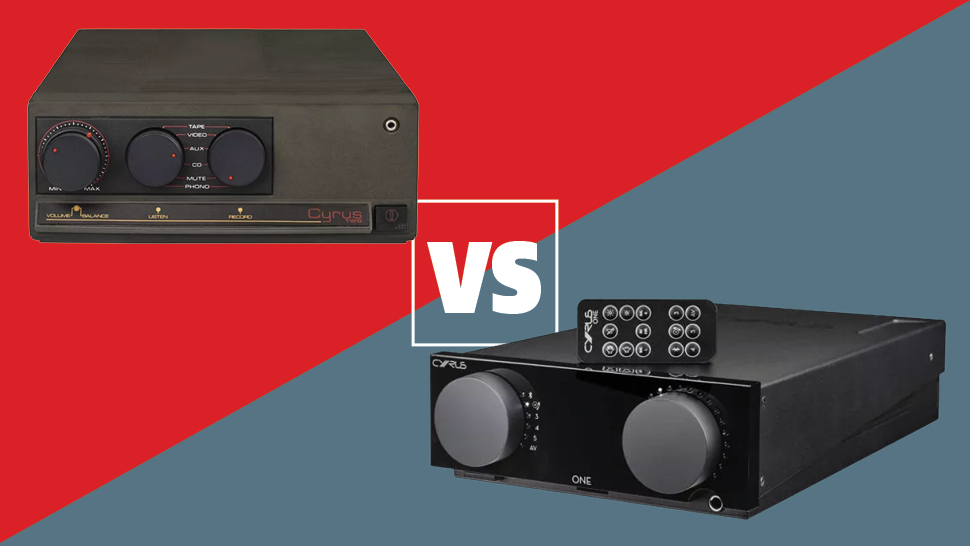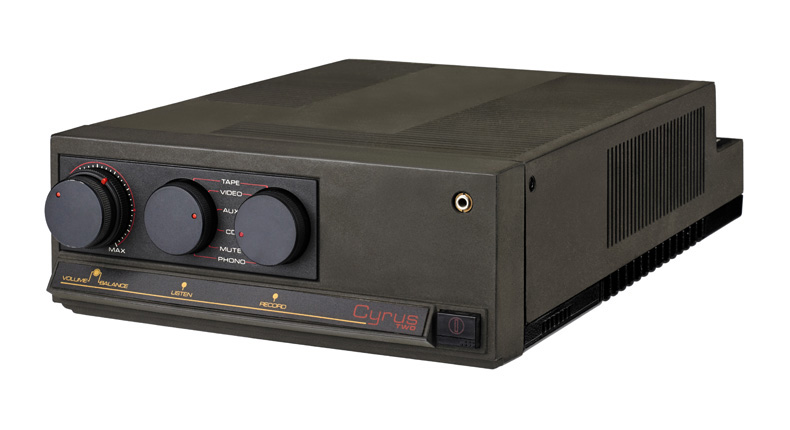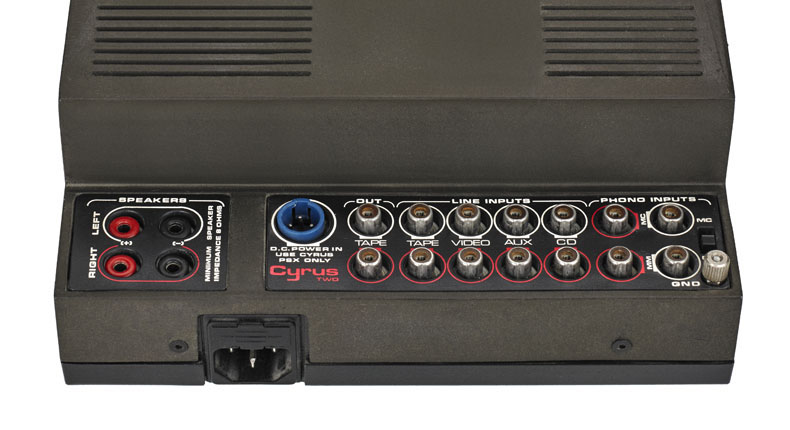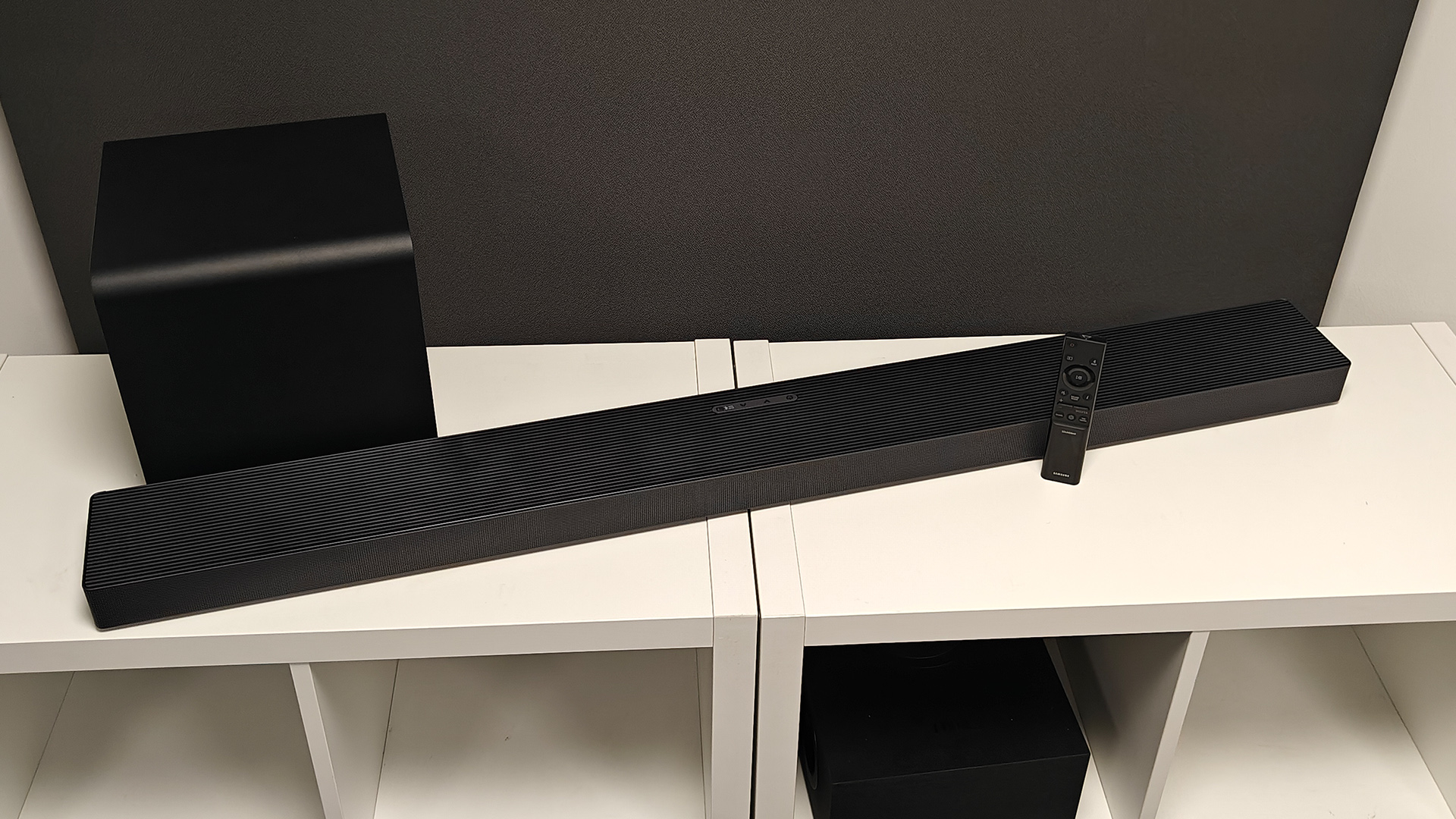Old amplifier vs new amplifier: does the best hi-fi stand the test of time?
In 1984 an affordable stereo amp arrived that blew away the competition, but can it beat the best modern amps?

Back in the early 1980s, Cyrus Audio was founded as the electronics offshoot of Mission Loudspeakers. Indeed, in its early years the brand was called Mission Cyrus. It launched its first products in late 1984, two half-width integrated amplifiers called, simply, the Mission Cyrus One and the Mission Cyrus Two. At launch they cost £130 and £230 respectively, the equivalent of about £600 (approx $700, AU$1000) and £1000 (approx $1200, AU$1800) today.
They were essentially two versions of the same amplifier, sharing the same plastic casework/steel chassis and main circuit board. The Two had a more generous power supply that raised power output to 50W per channel (double that of the cheaper amp) and a more sophisticated moving coil section in the switchable phono stage.
- The best stereo amplifiers you can buy

Outwardly there was little to differentiate them bar the badging and the Two’s input for the optional PSX outboard power supply.
The PSX supply added extra muscle and scale, raising the Two’s power output to 70W per channel. By leaving the amplifier’s internal supply to feed just the preamp section, it also improved sound quality across the board.
Both amplifiers continued to be developed during their lives, gaining classy alloy cases in late 1987.
So, how do they compare?

We managed to source a Cyrus Two of this era and take advantage of the company’s ability to continue to service many of its earliest products. It's admirable that Cyrus can still support products that are into their third decade of life and bring them back to full working order. There aren’t many audio companies that can do the same.
The paintwork on our Two is a little faded and marked, but even by today’s standards it’s superbly made. We’re astonished that Cyrus managed to specify their entry-level amplifiers with such an elaborate die-cast chassis.
The latest hi-fi, home cinema and tech news, reviews, buying advice and deals, direct to your inbox.
This casting also doubles as a heatsink for the output transistors, saving on parts and assembly costs. We can’t think of a current amplifier below the two grand mark with such an exotic case design.

Look inside and you’ll find a relatively simple circuit packed with components of a surprisingly high standard. The preamp section is pretty much a passive design with just the phono stage needing power to work.
Even now, the upward-facing connections look exotic and make adding the Two into a system easy thanks to their clear, easy-to-read markings. The downside is that they also collect dust without much encouragement.
Once thoroughly warmed-up, the Cyrus Two puts in an astonishingly good performance for something made over 30 years ago. It sounds clean, crisp and immensely detailed. So detailed that the Rega Brio hardly manages to do any better when it comes to sheer resolution.

We try the amplifier with a range of speakers from a relatively sensitive pair of Audio Note Type Js (a design originating in broadly the same era as the Cyrus) right the way through to our reference ATC SCM50. And we like what we hear.
We’re impressed by the Two’s control and the way it bends the speakers to its will. We play Prokofiev’s Romeo And Juliet and are pleased by the amplifier’s insight and precision. In comparison, a similarly aged Arcam A60 amp sounds blurred and soft. Clarity is of a high order as is the way it delivers dynamic changes; there’s subtlety as well as punch when required.
Tonally, as with all early Cyrus amps, things are a little lean and lacking in natural warmth and authority. It’s as if the outline of each note is immaculately drawn but not quite shaded in properly. This is an area where the new Rega amplifier pulls ahead, delivering almost as much precision, but with a greater sense of richness and weight.

Stereo imaging is crisply layered with the classic Cyrus amp. It’s smaller in scale than current standards, but pleasingly clutter-free. The soundstage stays stable when the amplifier is pushed too.
We move to Radiohead’s In Rainbows and the Cyrus proves right at home. It’s superbly articulate and agile, punching out the hard-charging 15 Step with real venom. We love the punch on offer as much as the way this amplifier communicates the almost unstoppable momentum of the piece.
We can’t ask for anymore when it comes to clarity, every instrument and sound is crisply rendered. Take care with partnering equipment to compensate for the lean and analytical balance, and even by current standards it’s an impressive performer.
Old Cyrus vs new Cyrus

We have a listen to a current Cyrus One, something that shares the half-width size of the original designs but little else. It has remote control, Bluetooth and a power output of 100W per channel, thanks to Class D circuitry.
The two products couldn’t be more different in sonic character. The current amp sounds massively more muscular. Its presentation is bigger, richer and more authoritative across the board, but particularly at the low-end.
Yet in comparison we miss the old timer’s responsiveness and clarity. The 1984 Cyrus Two communicates the music’s message with more skill, and ultimately (rather surprisingly) turns out to be the more transparent of the two.
Cyrus stopped producing the Two (along with the original One) in the early 90s, replacing them with more sophisticated designs which added remote control and microprocessor control.
Yet we feel the classic Cyrus Two still has plenty of appeal today, and if you’re willing to put up with a hands-on approach, remains surprisingly capable by current standards. If you can find one in good condition, you won’t be disappointed. It just goes to show, the best hi-fi products really do stand the test of time.
MORE:
Should you buy a streaming amplifier? Pros and cons to consider before owning a network amp
Old speakers vs new speakers: How do they compare?
What Hi-Fi?, founded in 1976, is the world's leading independent guide to buying and owning hi-fi and home entertainment products. Our comprehensive tests help you buy the very best for your money, with our advice sections giving you step-by-step information on how to get even more from your music and movies. Everything is tested by our dedicated team of in-house reviewers in our custom-built test rooms in London, Reading and Bath. Our coveted five-star rating and Awards are recognised all over the world as the ultimate seal of approval, so you can buy with absolute confidence.

